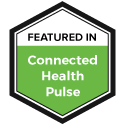5 minute read:
It’s hard to believe, but many organizations continue to be in denial about their need to comply with the Affordable Care Act (ACA).
Time and time again we hear stories of companies, non-profits and local governments that believe they either do not have to comply with the ACA or something will change legislatively to remove their obligations to offer their full-time employees health insurance under the ACA’s employer mandate.
Every day these employers put off the inevitable, the larger their potential employer shared responsibility payment (ESRP) exposure will be and the more likely they will be assessed an ESRP by the IRS.
We thought it would be helpful to debunk some of the rumors we hear most frequently from those organizations in denial.
My organization is not required to comply with the ACA.
You are required to comply with the ACA’s employer mandate if your organization has 50 or more full-time or full-time equivalent employees, whether you are a for profit, nonprofit or government entity. Under ACA regulations, a full-time employee is someone who averages at least 30 hours of service a week or 130 hours a month. If you own or are a partner of several business organizations, each with less than 50 employees, you still may be required to file as a Controlled Group under ACA employer aggregation rules.
If I haven’t received a Letter 226J by now, I’m not going to receive one.
You still might. The IRS has spent the past few years developing an automated ACA Compliance Validation System and associated data tools to automatically search its data bases for information that will identify organizations that have not complied with the ACA. The IRS began issuing Letter 226Js in November 2017 to organizations it believes did not comply with the ACA in the 2015 tax year. The effort is continuing and is expected to expand to the review of 2016 ACA filings before the end of the year. If you have not filed or provided inconsistent or incorrect information, the IRS’s automated system can identify you and you will be assessed a penalty.
I can always get a penalty waiver for not filing my ACA information with the IRS.
The IRS has said there is no provision in the ACA that provides a waiver of ESRP. In a letter to a member of Congress that was made public, the IRS stated that an employer that fails to offer health coverage to its full-time employees is liable under the statute for the ESRP with no excuses accepted.
The federal government still is going to repeal the ACA.
Republican efforts to repeal the ACA have begun to resemble Don Quixote charging at windmills. If the Republicans who are in charge of the White House and both chambers of Congress could not repeal the ACA, chances are it will remain in place. In fact, expect that healthcare law will become more complex as state governments pursue things like state-wide individual healthcare mandates and revisions to how healthcare is provided in their states. Amidst all the discussion and changes, the one thing that has remained unchanged is the ACA employer mandate. And the IRS is enforcing it. You need to comply or risk receiving IRS penalties.
The penalty for not filing ACA information with the IRS is a drop in the bucket.
We have seen ESRP assessments up to $20 million, depending on the size of the organization. Penalties collected under the ACA’s employer mandate were designed to help offset the cost of the ACA’s PTC subsidies. The Congressional Budget Office (CBO) estimated that 2016 ESRPs collected from the ACA employer mandate would be around $21 billion. A study by Accenture added another $10 billion to that 2016 estimate, raising the forecast to $31 billion. A quick way to assess your organization’s exposure is to multiply $173 and the number of full-time and full-time equivalent employees you had on staff during 2015 (not just at the end of the year.) That should provide a snapshot of your minimum penalty exposure. For example, if you have 1,000 full-time employees, you would owe $173,000.
Doing everything once a year is more than enough for ACA compliance.
Waiting until the end of the year puts your organization at risk for hefty ACA penalties. The IRS bases its penalty assessments on the employment and benefits information provided for each month during the tax year. Best practice is to assess that employment information each month to confirm that 95% of full-time employees and full-time equivalent employees have been offered coverage as required under the ACA.
With half the businesses in the U.S. saying they are not confident in their ability to satisfy ACA requirements and reported ESRPs in the tens of millions of dollars, the stakes are high. Now is the time to get real about your organization’s obligation to comply with the ACA.
If you are a company that should be filing ACA-related information with the IRS and have not complied, you should immediately seek assistance to submit filings for the 2015, 2016 and 2017 tax years to mitigate your potential financial exposure.
Organizations also should review how best to prepare for the potential for paying ESRPs for ACA non-compliance. CFOs should be taking into consideration the requirements of ASC 450 Contingencies (formerly FAS 5). If ESRPs are a possibility, they may be probable and reasonably estimable loss contingencies and should be recognized and disclosed in financial statements. If not, CFOs of these organizations must demonstrate that they have internal controls in place to mitigate any such potential excise tax liability.
If ESRPs are imposed, these IRS penalties may need to be disclosed in the MD&A section in SEC filings. Employer Mandate penalties must be disclosed on a partnership’s Schedule M-1.
Keep in mind that the ACA employer mandate has both financial and tax implications. To prevent your organization from having issues with auditors, plan ahead so that any ESRPs will not have an adverse impact on your organization’s operations and financial statements.
However, the first and best thing CFOs can do is understand what their organizations have done in regards to the ACA. If organizations are not compliant, don’t wait to act. The penalties are real, they are already mounting, and the IRS will find you.






